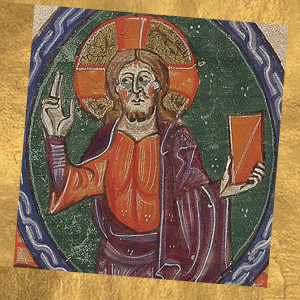St.William, Abbot, Founder of the Congregation of Montevergine

Sometimes, even a young child is able to make a decision that will change his life forever. This was the case with St William, who at the age of fourteen decided to go on pilgrimage – first to Santiago de Compostela, and then to the Holy Land. Like St Francis a century later, William gave up all he had in order to embrace a religious life. He freed himself from attachments to his family, gave up his noble title, put on a tattered habit, and left his home in Vercelli (Italy) barefoot. Compostela was the most famous pilgrimage site of his time, and it was to the Spanish shrine that William turned his steps. His journey took five years, walking the whole way, living off of bread and water, enduring hardships, sleeping on the bare earth. Along the way he spoke intimately with God, and proclaimed the Gospel to those he met.
An unimagined goal
Apart from Compostela, the goal of pilgrims in the 11th century was the Holy Land. When William returned from Spain, he turned his sights to Jerusalem. But “man proposes, God disposes”; and William could not contend with “the God of surprises.” Making his way through Italy in search of passage to the Holy Land, William was set upon in Brindisi by a band of criminals. When they found he had nothing to steal, the brigands turned to violence. Badly beaten, William was forced to interrupt his journey.
While recovering from his injuries, William went to meet with Giovanni da Matera, also a future saint. Da Matera argued convincingly that the attack of the bandits was a sign from God that William should dedicate his life to proclaiming the Gospel in Italy. In 1118, William went to the region of Irpinia, at the base of Monte Partenio, where he became a hermit.
Monks of Montevergine
As a hermit, he embraced solitude – but solitude was difficult to maintain. His fame as a holy man spread throughout the region, and people began to visit the William’s eremitic cell. The hermit became the abbot of a small community, the germ of the Order of Monte Vergine, which was officially recognised in 1126. Originally, the group had few written rules. St William led more by example than by instruction: he undertook rigorous penances, was found constantly at prayer, and served the poor with great charity.
But William’s desire to go on pilgrimage could not be quenched. He entrusted the community he had founded to his disciples, and returned to the pilgrim’s path. He travelled throughout southern Italy as far as Sicily. Rich or poor, those who met him were fascinated. Stories of his miracles began to spread, including the famous “Miracle of the Wolf”: when a wolf killed a donkey that William had used for various tasks, the saint commanded the beast to take up the donkey’s burdens; the wolf became perfectly tame.
Patron of Irpinia
The abbey St William founded prospered thanks to continuous and generous gifts. Among the friends of the monastery was Roger II, a Norman king. On a journey to see his royal patron, St William’s strength began to fail him. He died in the year 1142, at the monastery he founded at Goleto. His relics remained there until they were transferred to Montevergine in the 19th century. In 1942, 800 years after his death, Pope Pius XII declared him the primary patron of Irpinia.







